Table of Contents
Creamy, cozy, and oh-so-comforting.
There is nothing like snuggling up on the couch with a big ole’ bowl full of a Thai-style green chicken curry.
The only problem with store-bought versions (and many restaurants, as well) is they are full of not-so-good-for-you ingredients.
So, I set out to recreate those spicy, a little sweet, and authentic Thai flavors in an easy homemade curry recipe. (Taking a little inspo from this Thai Yellow Chicken Curry, of course!)
Ingredients
For the exact measurements and detailed instructions, you can jump to the recipe.
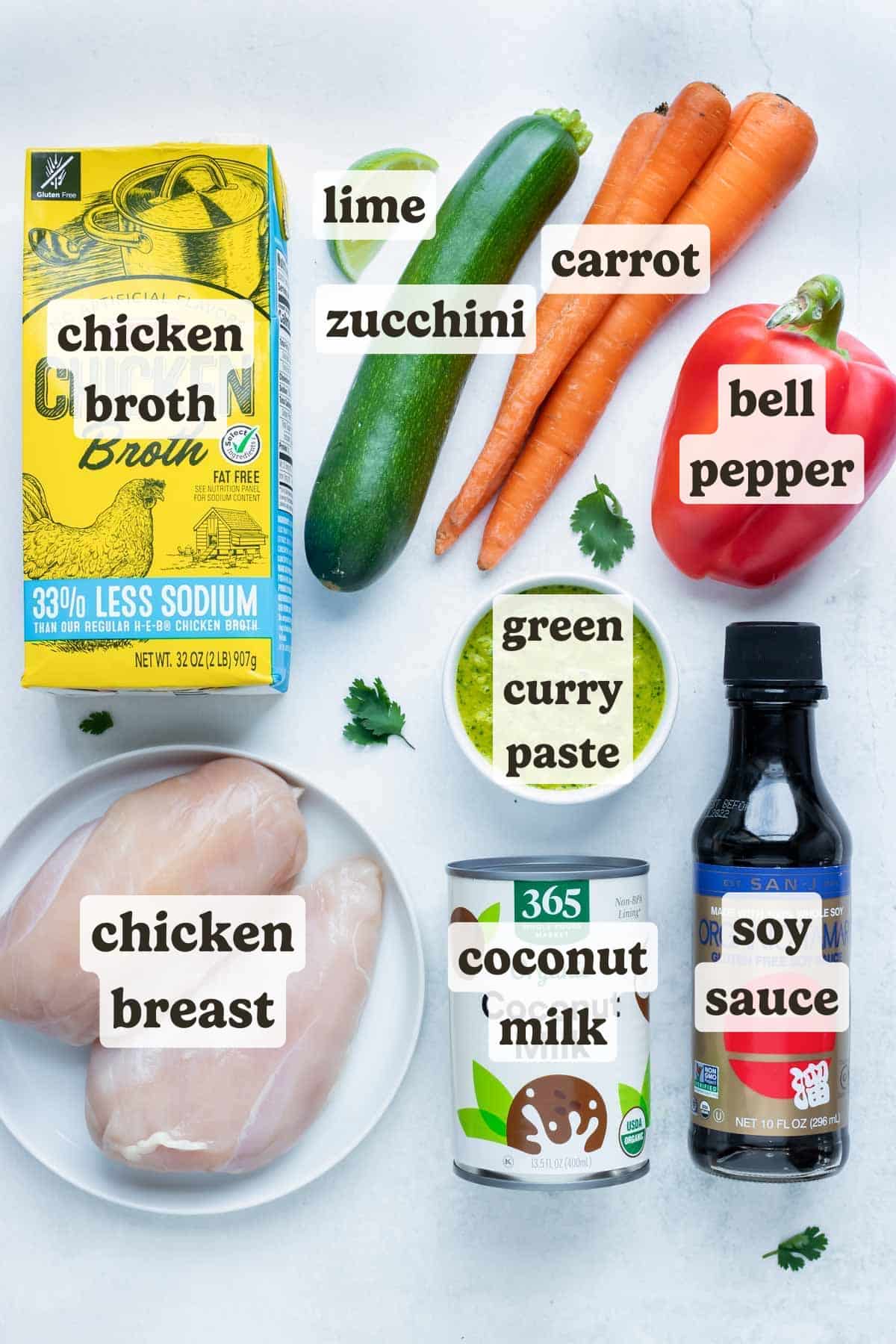
- Chicken. Boneless skinless chicken breasts are pounded down to 1 inch thick and thinly cut into ½-inch thick slices. Chicken thighs would also taste incredible if you want a meat with more fat and juiciness.
- Thai green curry paste. It is super simple to make your own at home or opt for a store-bought paste. Be sure to check the spice level before adding it in, however. You might have to check an Asian market to find a bottle.
- Carrots. Peel 2 to 3 large carrots and then chop into ¼-inch pieces. Cut them at a bias, or at an angle, for a prettier presentation.
- Zucchini. These can be prepared a little larger than the carrots since they cook up quickly. You can also slice these diagonally, for a more authentic look.
- Bell Pepper. Red peppers add a nice color contrast, but yellow, orange, or green can also be used. Create long strips of bell peppers that are about ¼ to ½-inch thick.
- Coconut Milk. Full-fat coconut milk is the best if you want to make sure to end up with a thick and creamy dish. A lite coconut milk can be substituted if you’d prefer to limit your fat and calories.
- Soy sauce. This salty sauce is poured in at the end. Add as much or as little as you’d like until you reach your desired saltiness.
- Lime. Fresh lime juice is squeezed in after cooking. You can even serve the dish with additional lime wedge so each guest can add more if they’d like.
How to Make Green Curry
Jump to the recipe for the full instructions, ingredient amounts, and a printable recipe.
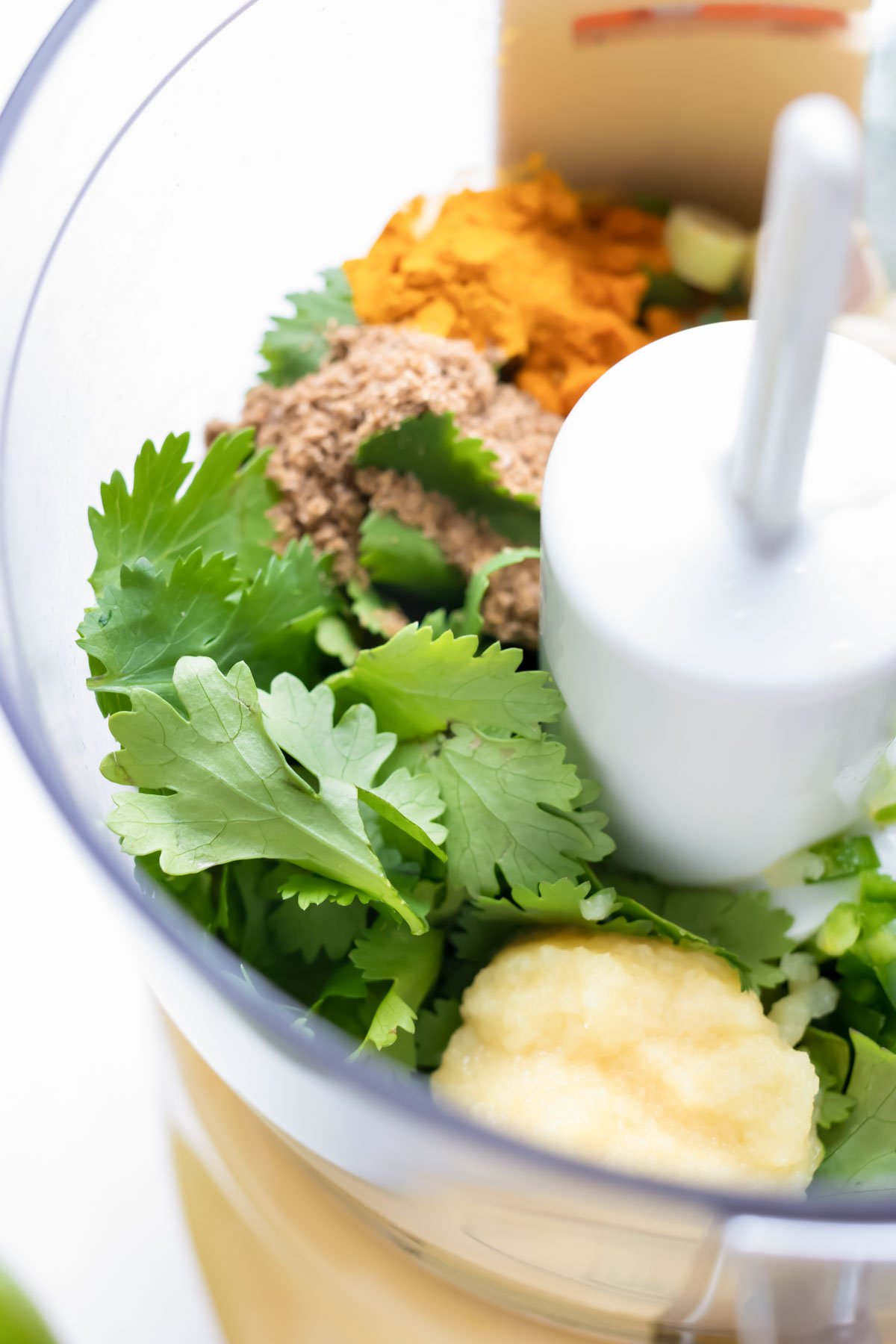
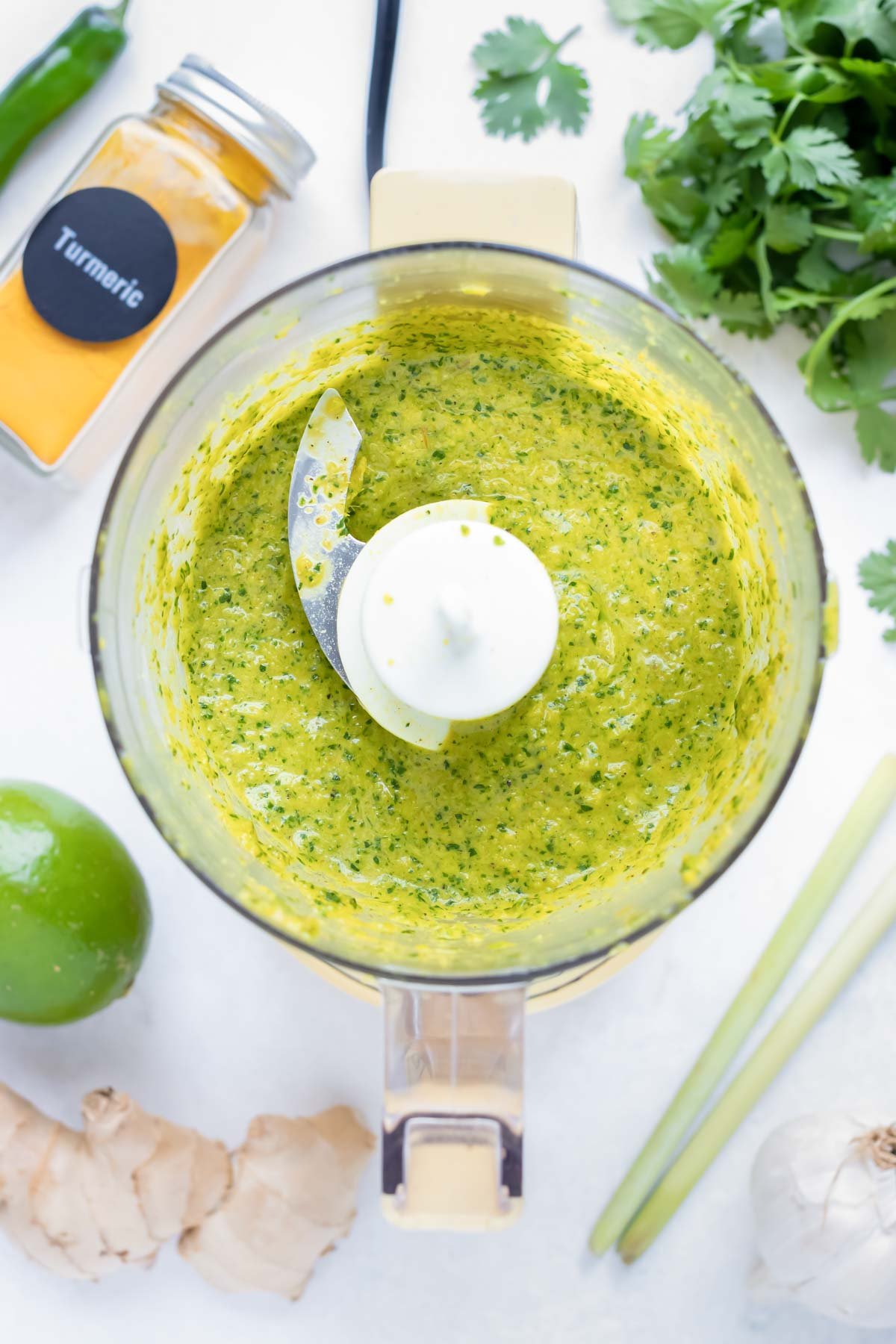
- Make the Thai curry paste. The first step is making the homemade green curry paste from scratch is key to getting all of those incredible and authentic Thai flavors! You can learn more information about how to make green curry paste. (It’s ready in less than 10 minutes!) Simply combine the prepared paste ingredients in a food processor and pulse until everything comes together.
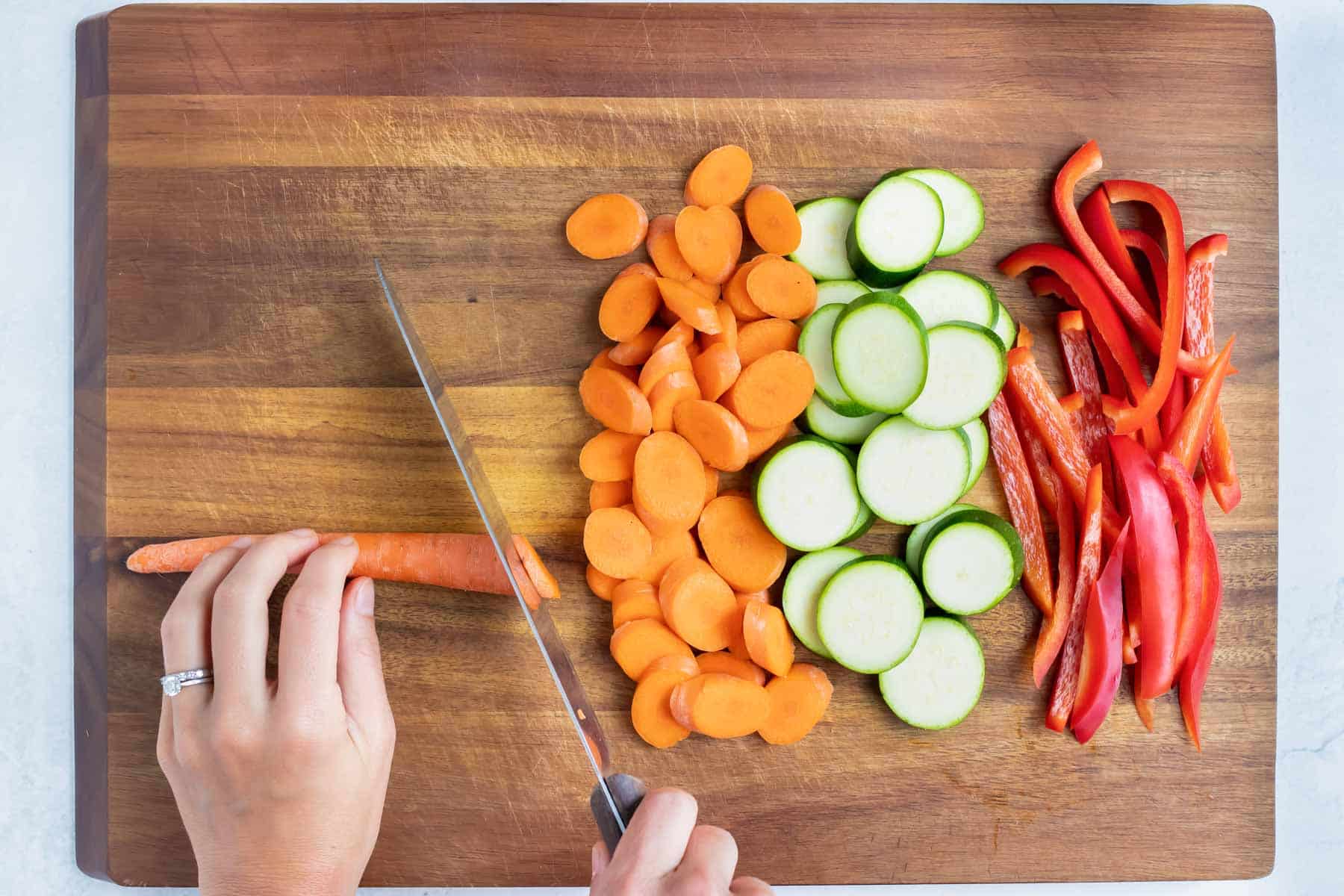
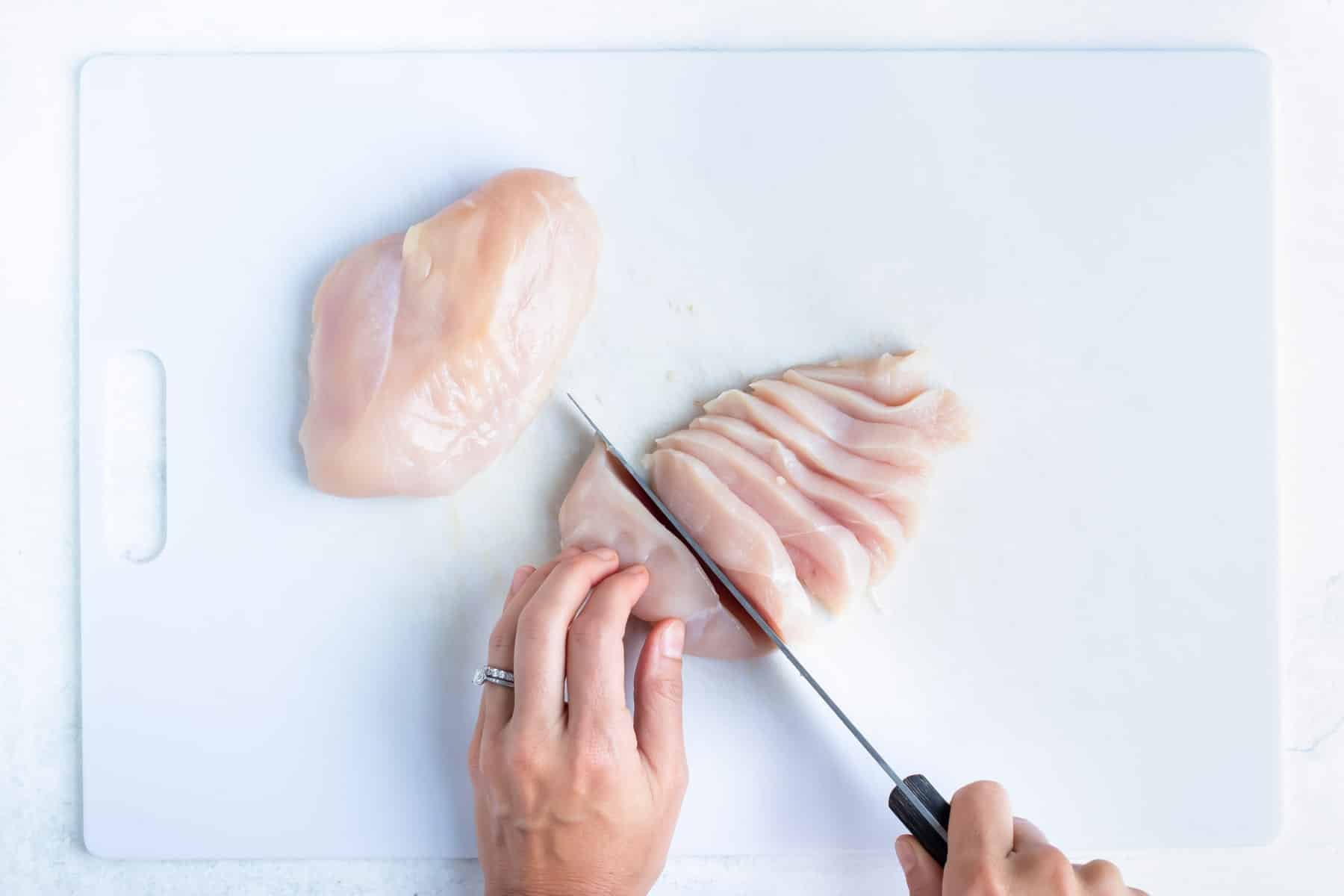
- Prep the ingredients. Use a sharp knife and a cutting board to slice the carrots, zucchini, and bell peppers. Use a plastic cutting board, a meat mallet, and a bag or cling wrap to pound chicken breast to 1-inch thick and then slice with a knife. Never use a wooden cutting board with raw meat as it’s hard to properly sanitize the porous surface. Always be careful when you handle raw chicken.
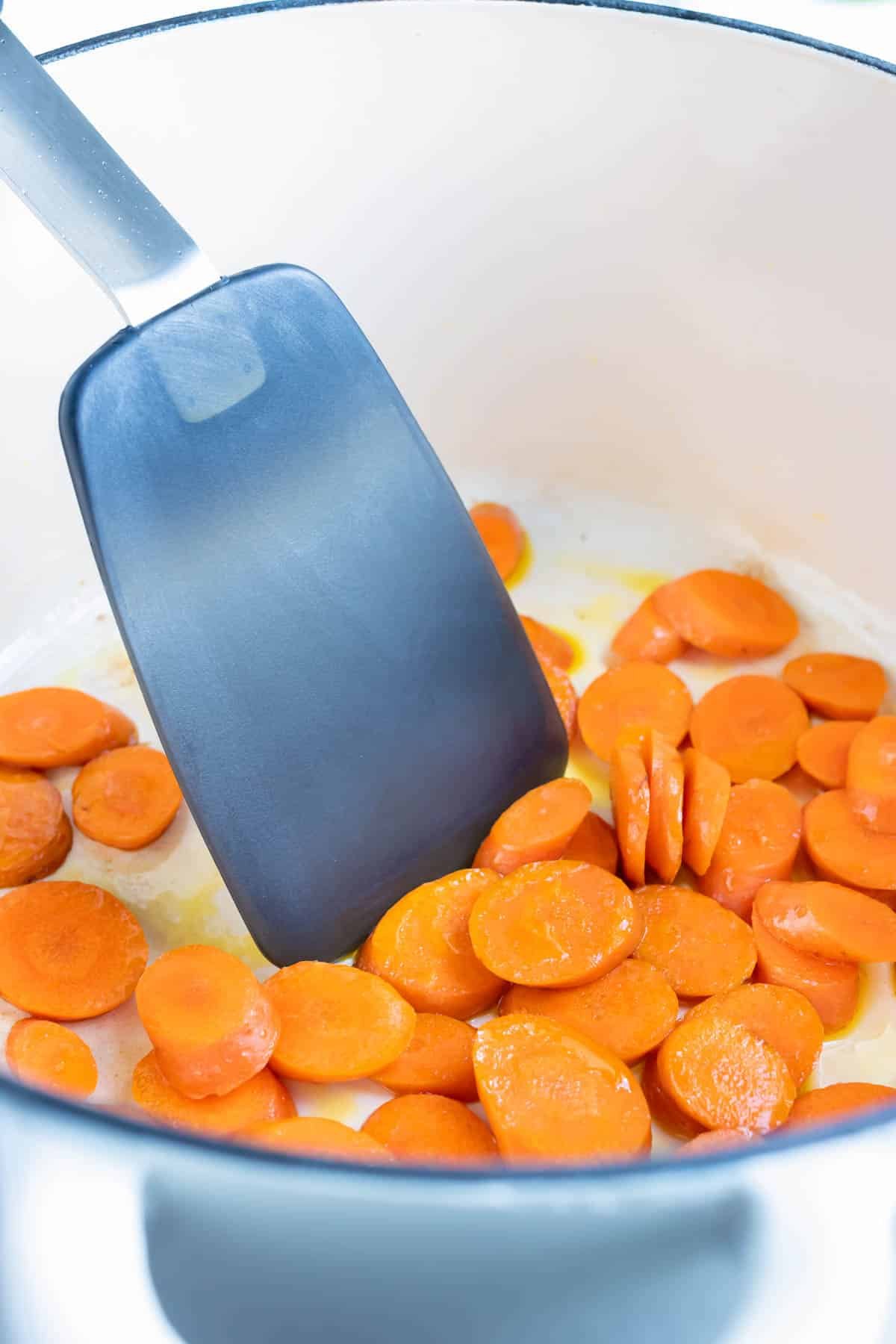
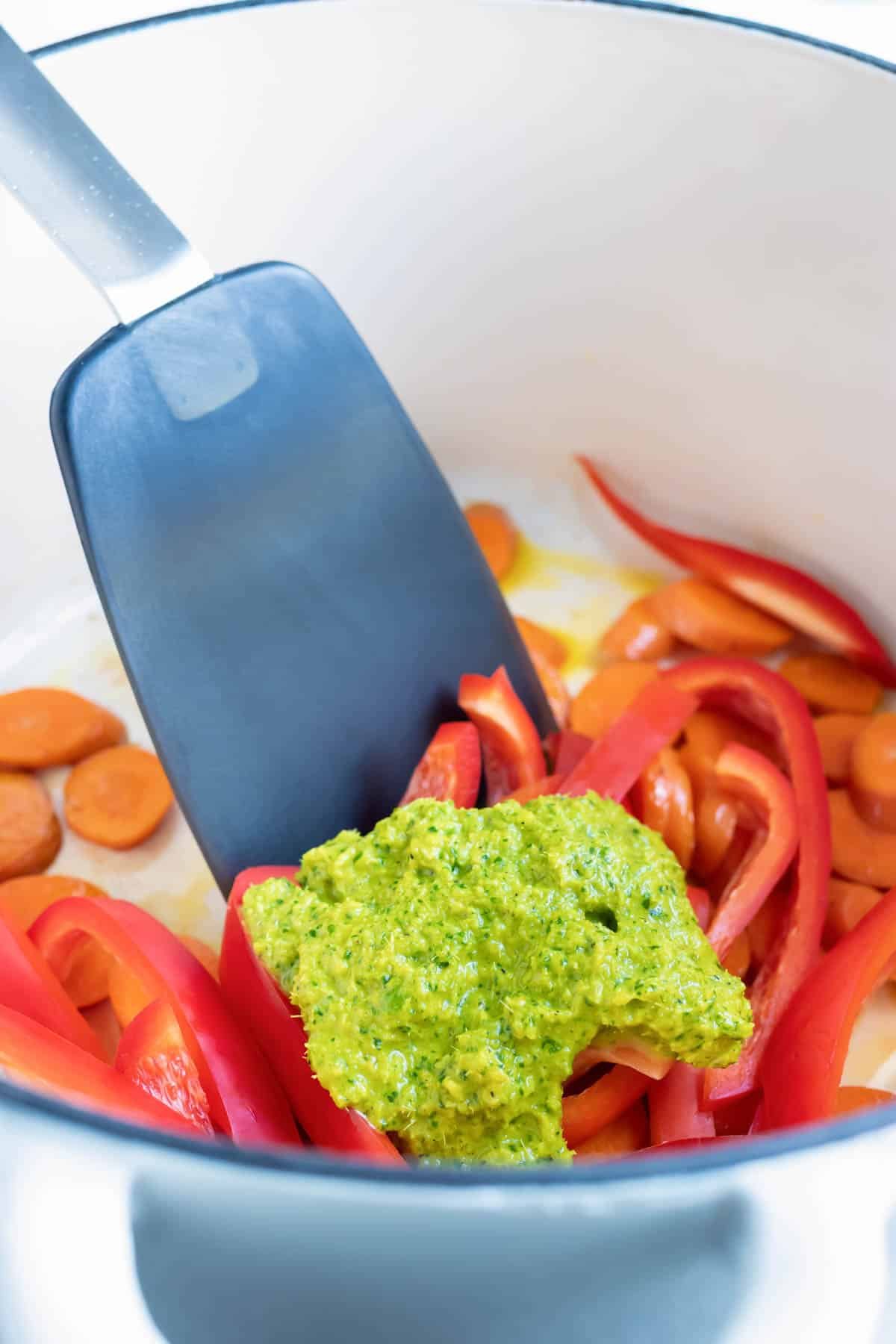
- Cook the veggies. Sauté carrots for 2-3 minutes over medium heat. Drizzle oil in a large skillet or Dutch oven before adding carrots. Add sliced bell pepper and fresh curry paste and continue sautéing for an additional 2-3 minutes. Stir to coat everything with the paste
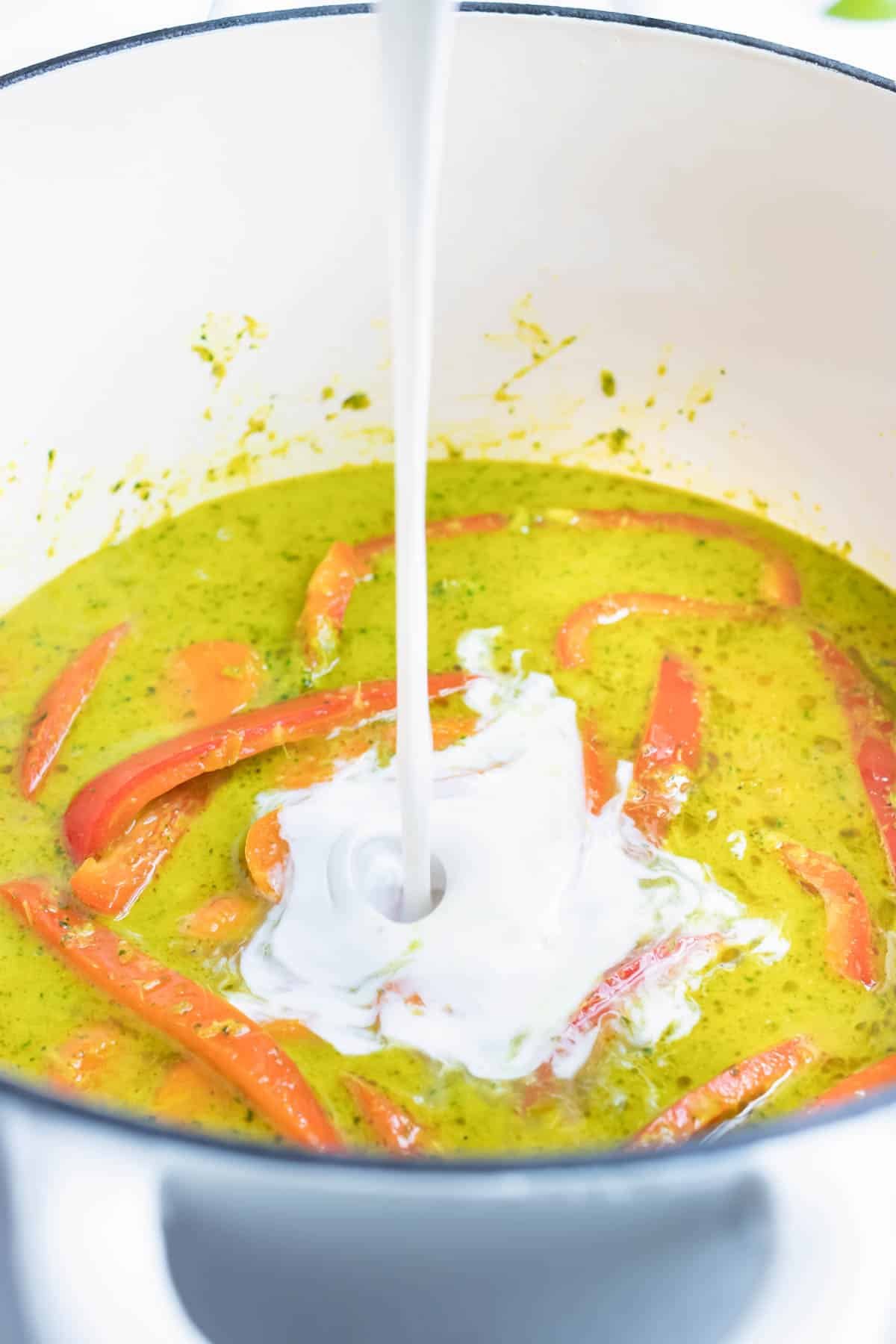

- Add the coconut milk and chicken. Pour in the coconut milk and the broth into the veggies. Stir to combine. Add chicken and zucchini. Stir, cover, reduce to low heat, and simmer for 15 minutes. Separate the chicken pieces when adding them to the pot so they do not clump together while cooking.
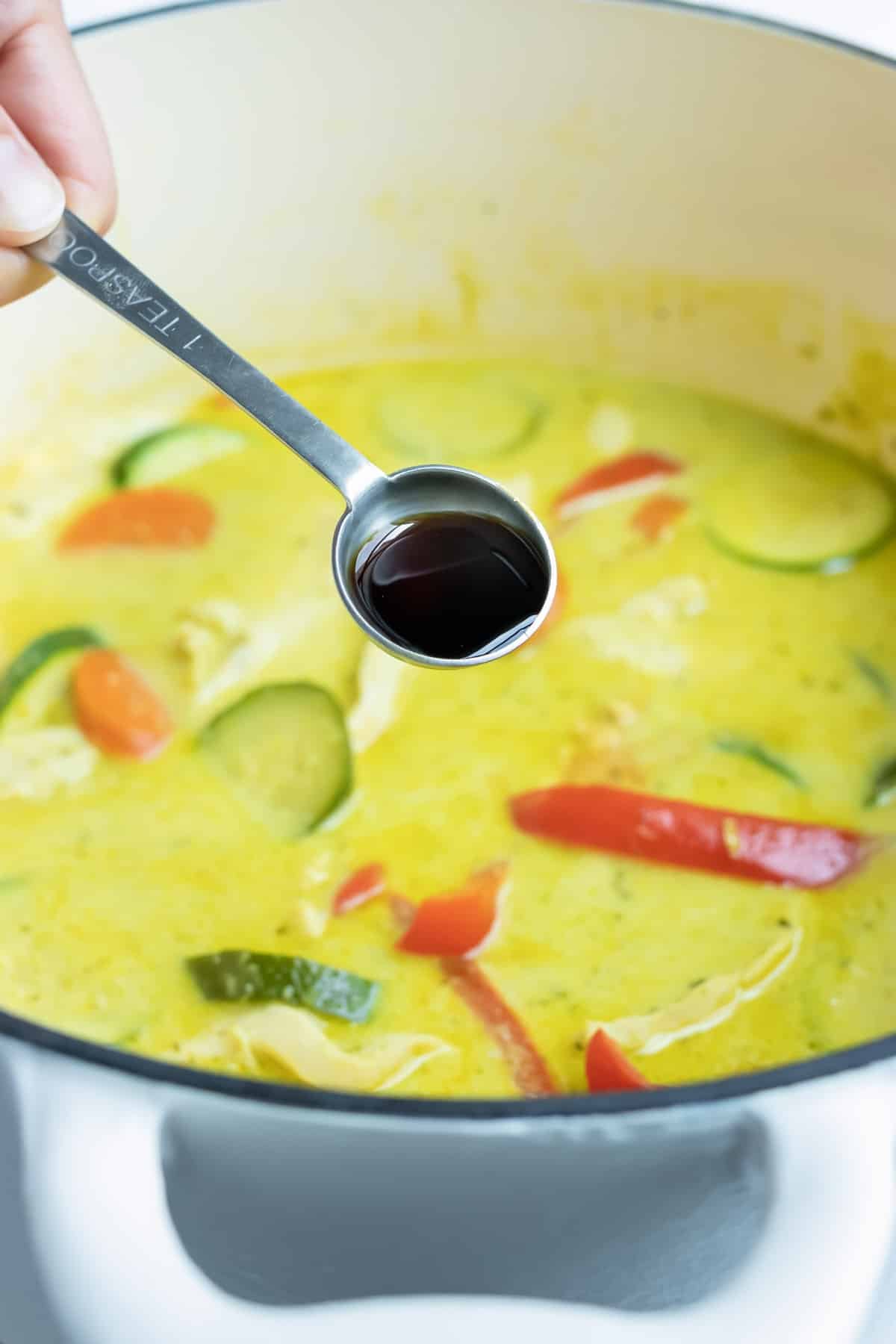

- Finish and serve. Stir in soy sauce, salt, and lime juice. Adjust the amount of salt to taste. Serve with fresh basil or cilantro for a pop of flavor and color. Pour over a bed of white rice, Jasmine rice, brown rice, or cauliflower rice.
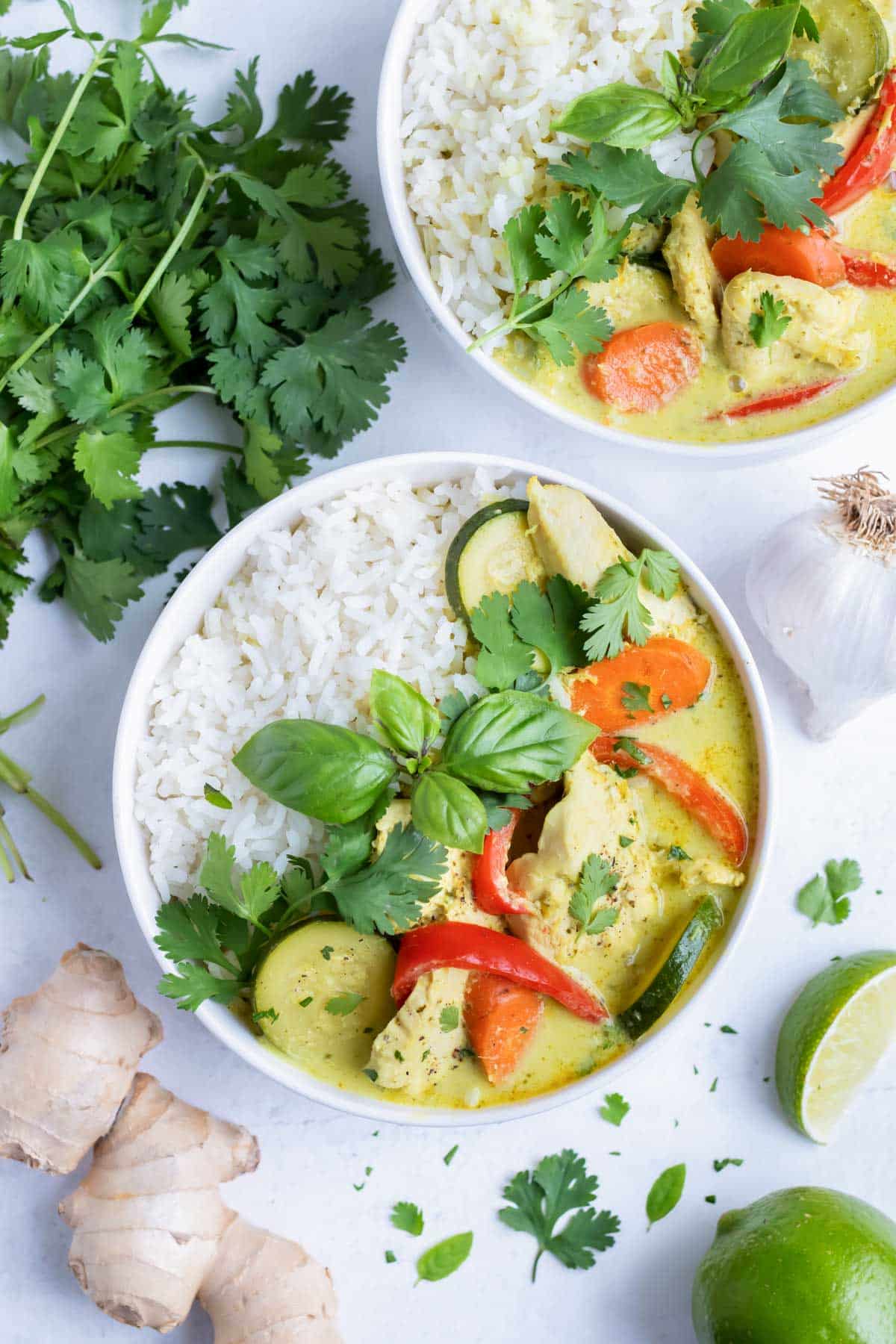
Meal Prep and Storage
- Prep-Ahead: Make up this dish in advance for an easy heat and serve meal.
- Storage: Keep leftovers in an airtight container in the refrigerator for up to 3-4 days.
- Freezing: Place leftovers in a freezer-safe container and freeze for up to 6 months.
- Reheating: Warm on the stovetop or in the microwave.
FAQs
Chicken is the most common meat used in green curry. Shrimp can also be added. Tofu and chickpeas make great vegetarian and vegan protein-packed additions.
Use full-fat coconut milk instead of lite, and only as much broth or water as needed. To thicken a runny curry, add a little extra coconut cream. You can also mash up some of the heartier vegetables (carrots, potatoes, etc.) to add a little extra bulk to the sauce.
Traditionally green curry is spicier than red or yellow due to its addition of Bird’s Eye chilies.
Thai yellow curry is the least spicy, mild-medium heat, red curry is normally medium heat, while green curry is medium-hot on the spice scale. You should always taste Thai red curry paste along with any curries before cooking with them.
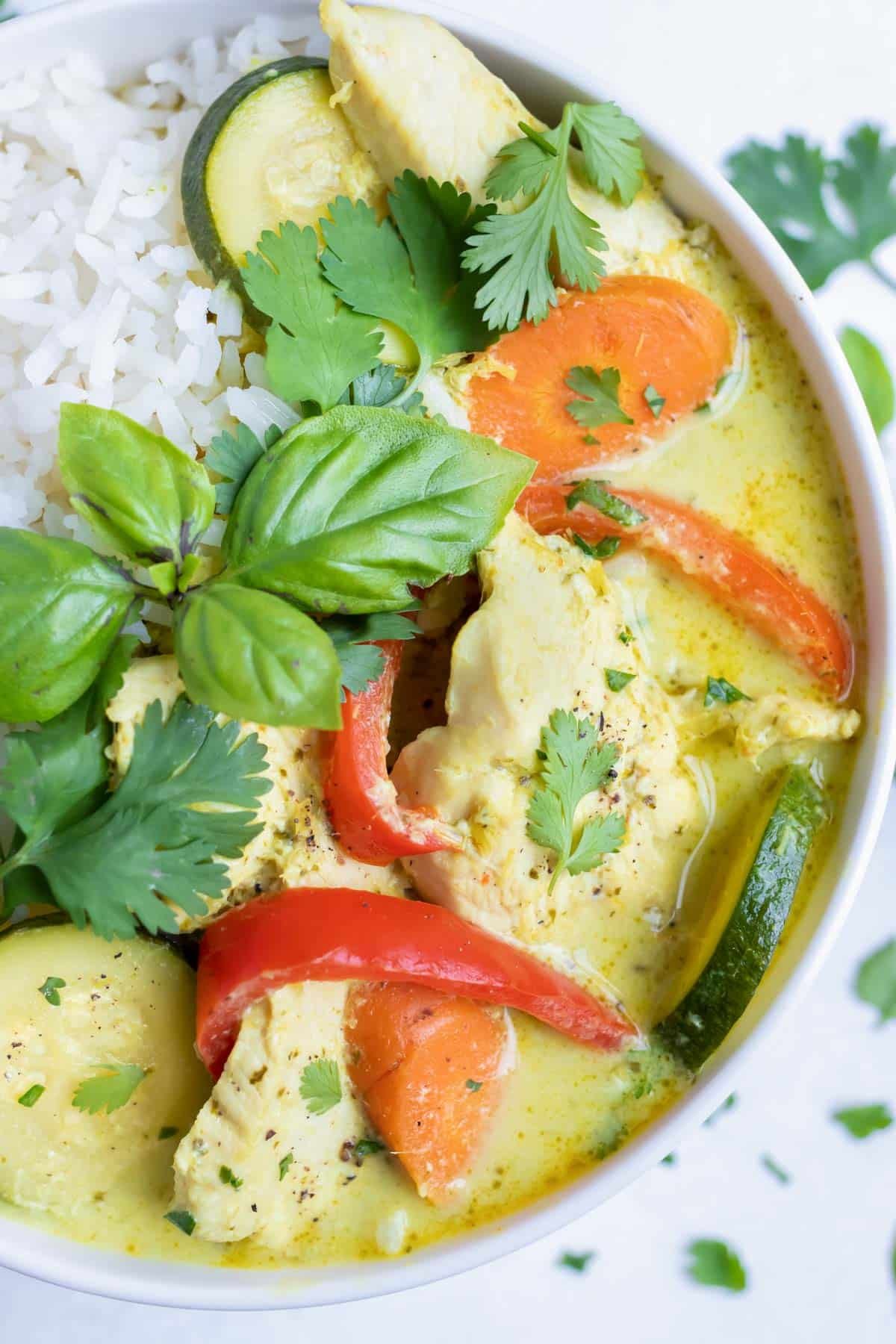
More Curry Recipes
Curry is such a distinct flavor, and you can do so many things with it. If you can’t get enough Thai dishes, try one of these recipes next.
Curry Chicken Salad is the perfect lunch just like this Chickpea Curry Recipe.
For more traditional recipes, stick with this Slow Cooker Chicken Curry with Coconut Milk, Chicken Korma Curry, or Thai Yellow Chicken Curry.
Tap stars to rate!
Thai Green Chicken Curry Recipe

email this recipe!
Ingredients
- 2 tablespoons olive oil
- 3 carrots peeled and thinly sliced on the bias
- 1 red bell pepper thinly sliced
- 1 recipe green curry paste about 1/3 cup of homemade*
- 1 pound chicken breasts cut into ½-inch slices
- 1 zucchini cut into ¼-inch slices on the bias
- 15 ounces coconut milk canned, full-fat or lite
- 1 cup chicken broth regular sodium
- 1-2 teasspoon soy sauce gluten-free Tamari or coconut liquid aminos
- ½ teaspoon salt to taste*
- 1 teaspoon lime juice plus more for serving
- Fresh basil optional
- Fresh cilantro optional
- White rice
Instructions
- In a large skillet or Dutch oven over medium heat, add oil and carrots. Sauté for 2-3 minutes.2 tablespoons olive oil, 3 carrots
- Add sliced bell pepper and paste. Continue sautéing for an additional 2-3 minutes.1 red bell pepper, 1 recipe green curry paste
- Pour in coconut milk and broth. Add chicken and zucchini. Stir to combine and cover pot with a lid.1 pound chicken breasts, 1 zucchini, 15 ounces coconut milk, 1 cup chicken broth
- Reduce heat to low and simmer for 15 minutes.
- Stir in soy sauce, salt, and lime juice.1-2 teasspoon soy sauce, ½ teaspoon salt, 1 teaspoon lime juice
- Serve with fresh basil or cilantro over rice or cauliflower rice and enjoy!Fresh basil, Fresh cilantro, White rice
Tap stars to rate!
Notes
- Meat: Substitute tofu or chickpeas for the chicken.
- Prep-Ahead: Make up this curry in advance for an easy heat and serve meal.
- Storage: Keep leftovers in an airtight container in the refrigerator for up to 3-4 days.
- Freezing: Place leftovers in a freezer-safe container and freeze for up to 6 months.
- Reheating: Warm on the stovetop or in the microwave.
Nutrition
Nutrition information is automatically calculated, so should only be used as an approximation.

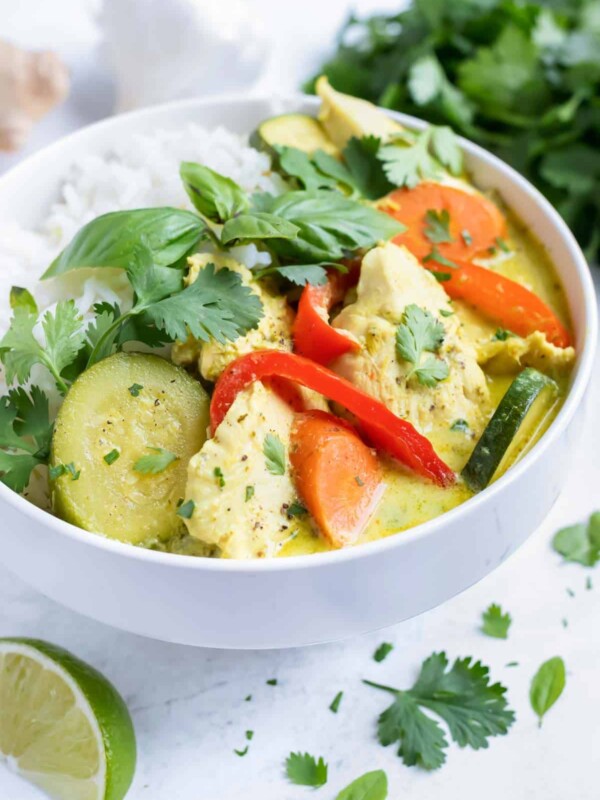
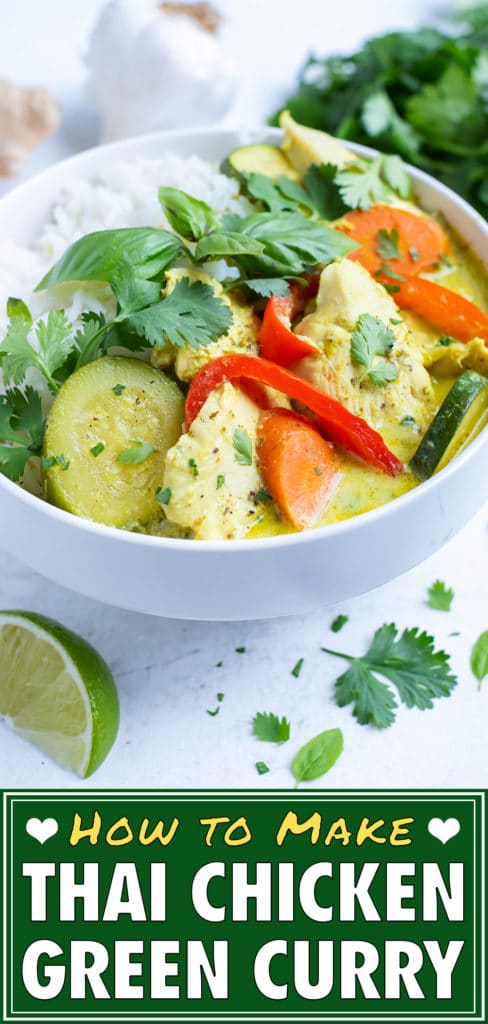
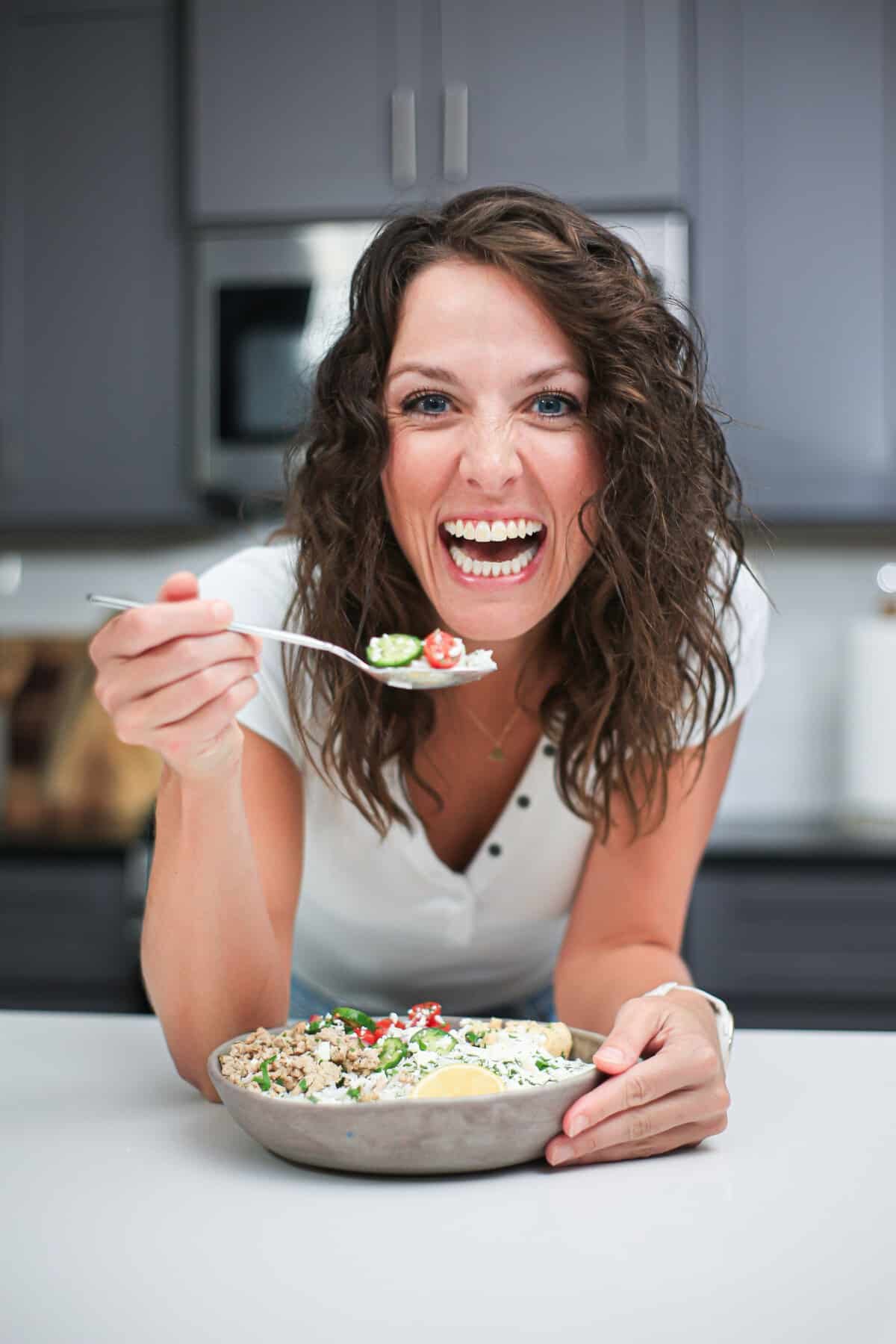

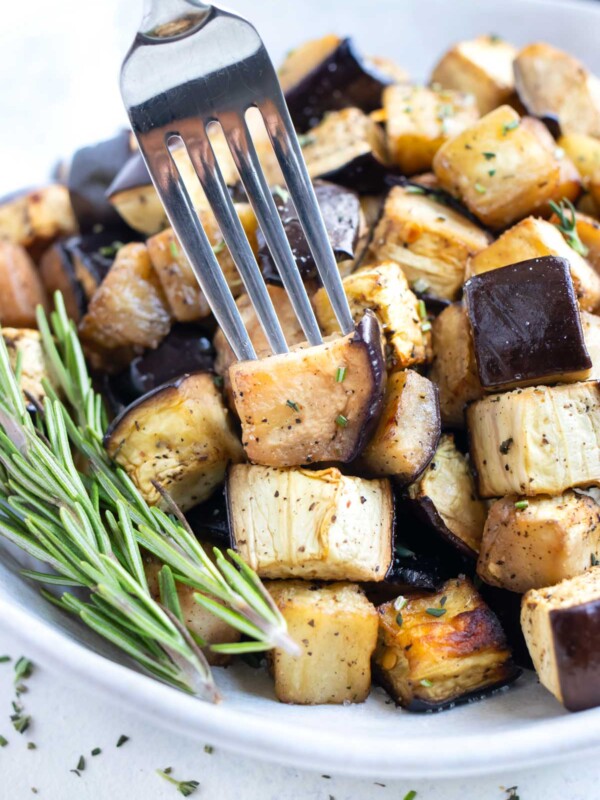
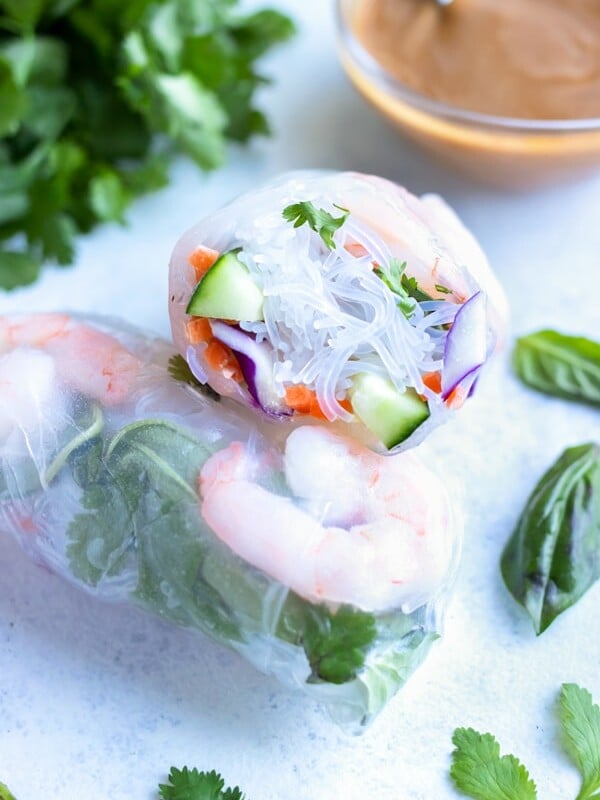
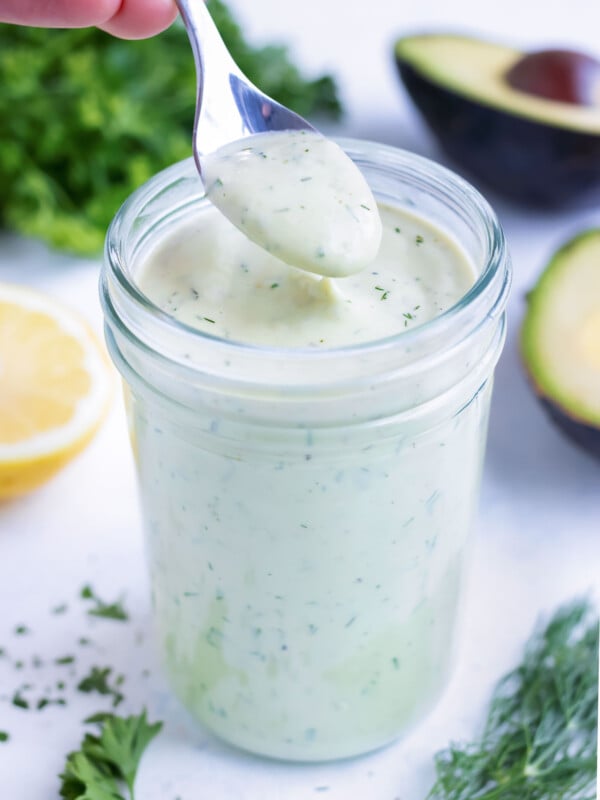
Wow, these wings look so amazing! Definitely pinned this for later and please visit us: https://www.beckandbulow.com
This recipe is fantastic! Reminds me I need to go back to Thailand.
I loved the topic you wrote on. It was an amazing ride of some great work.